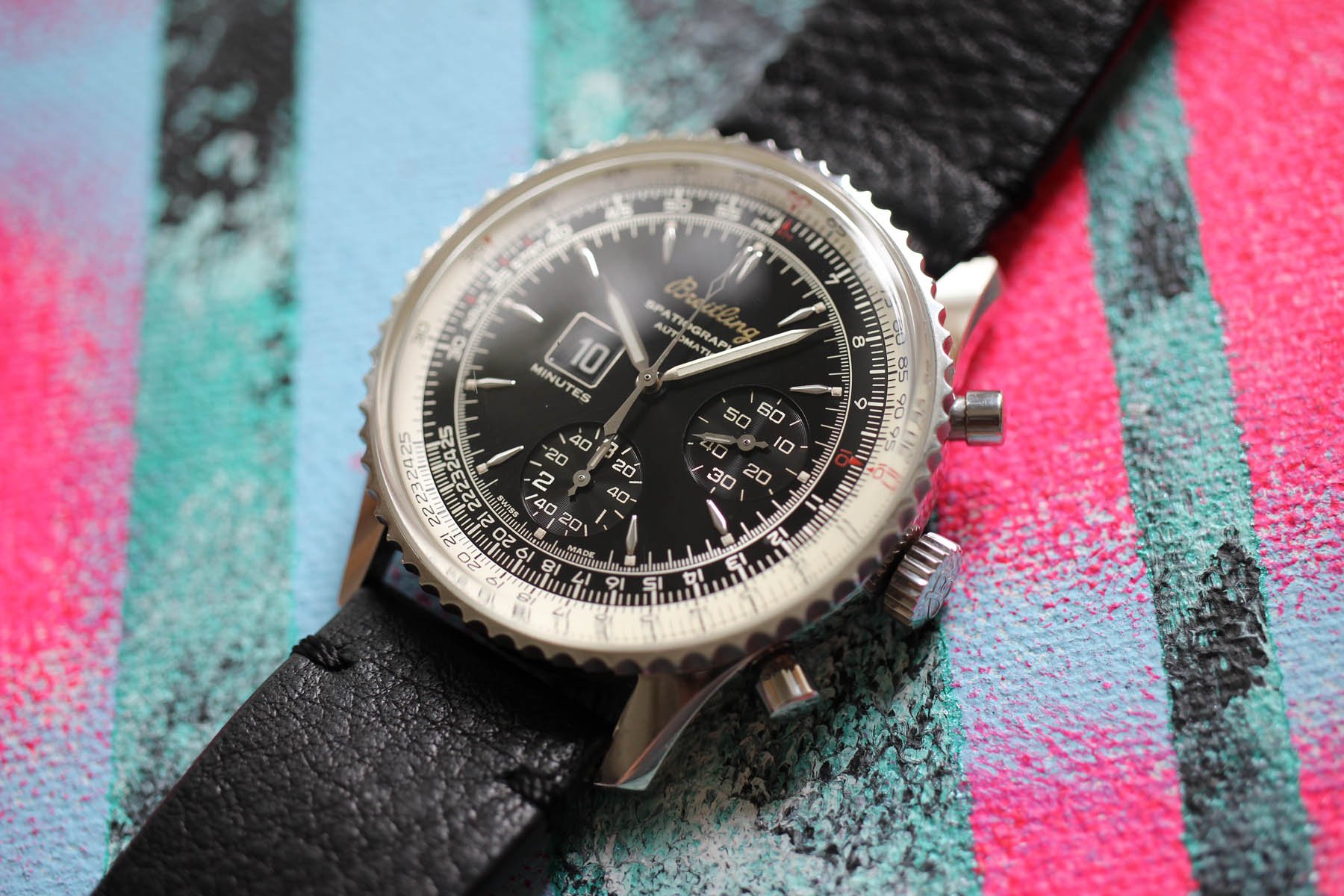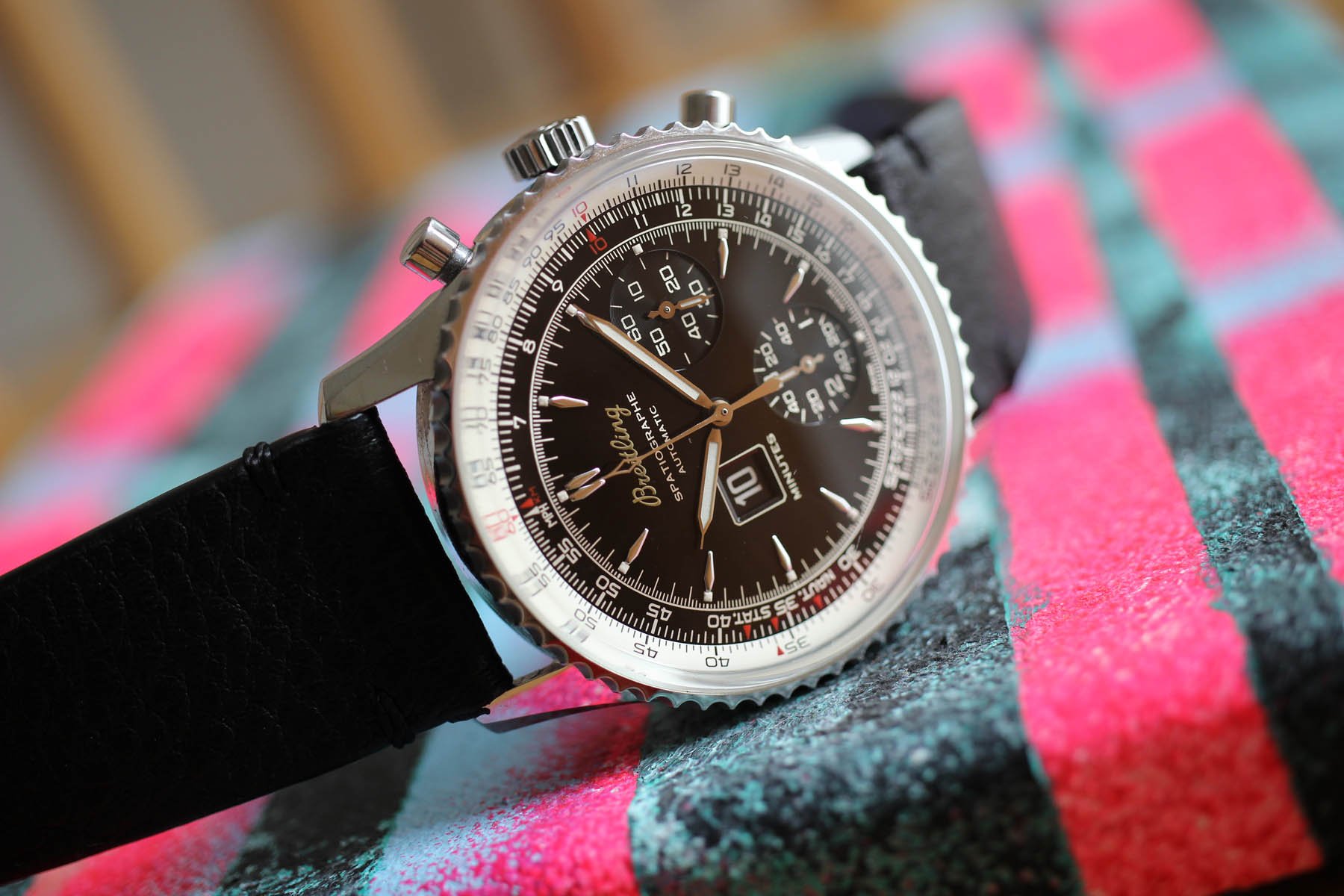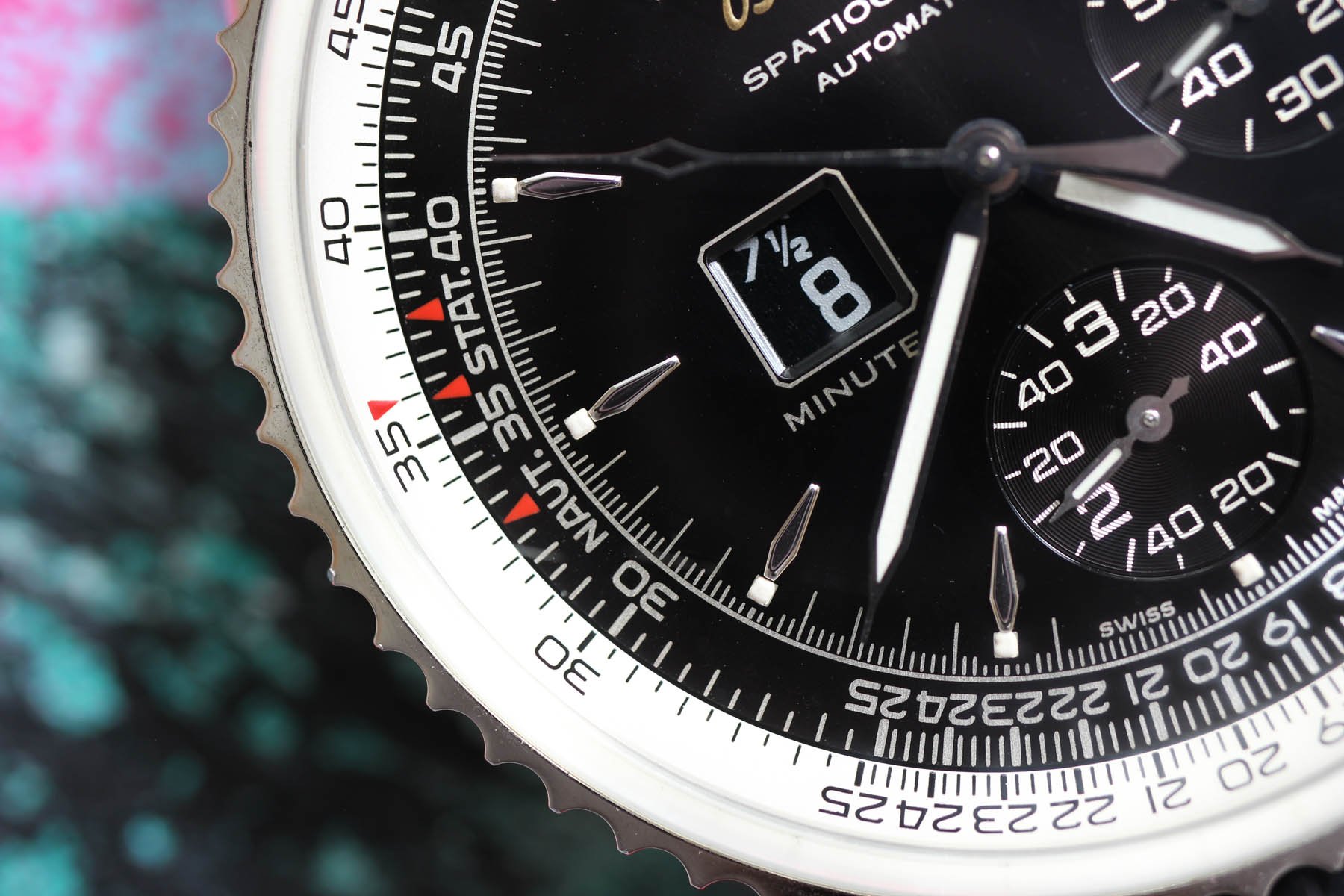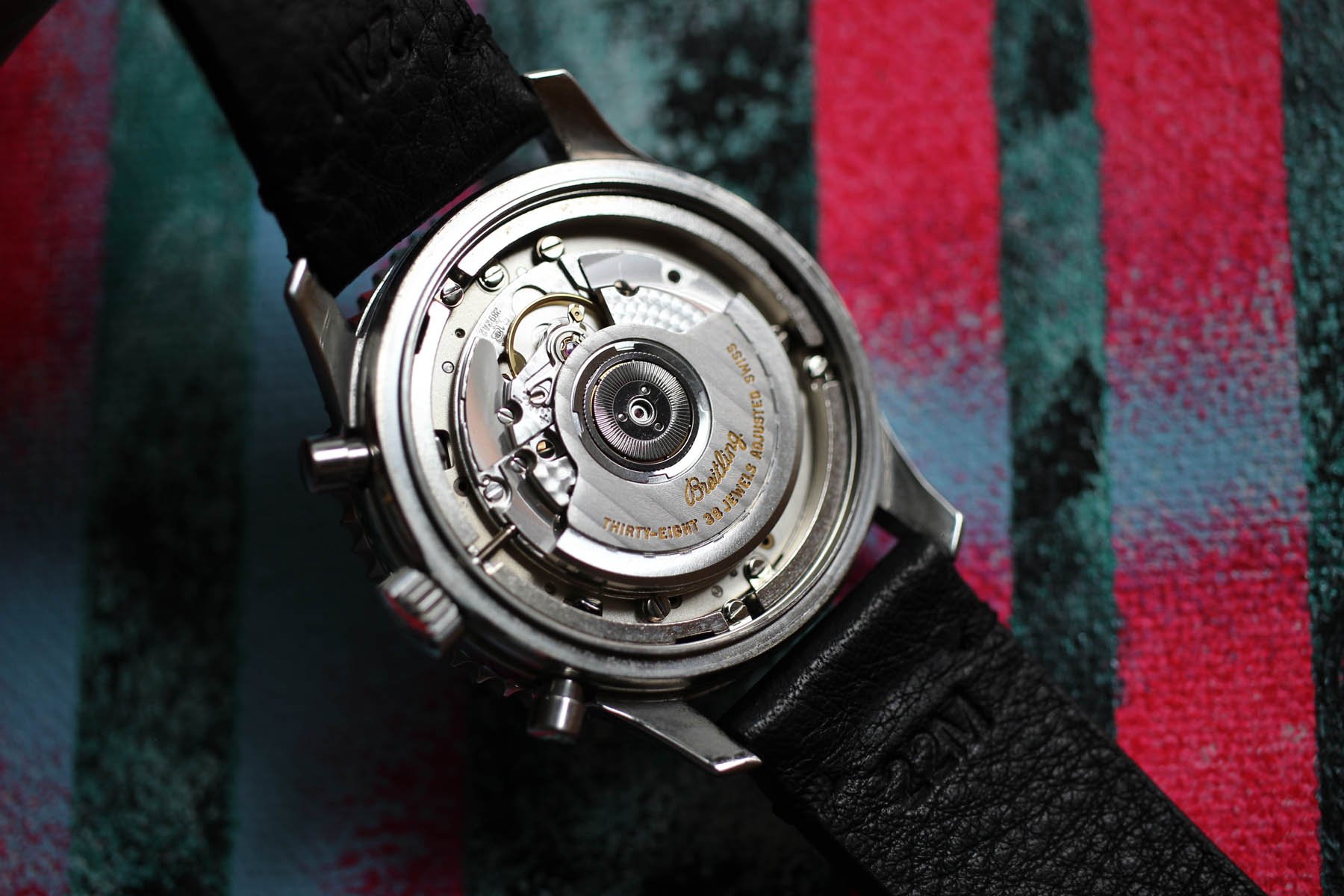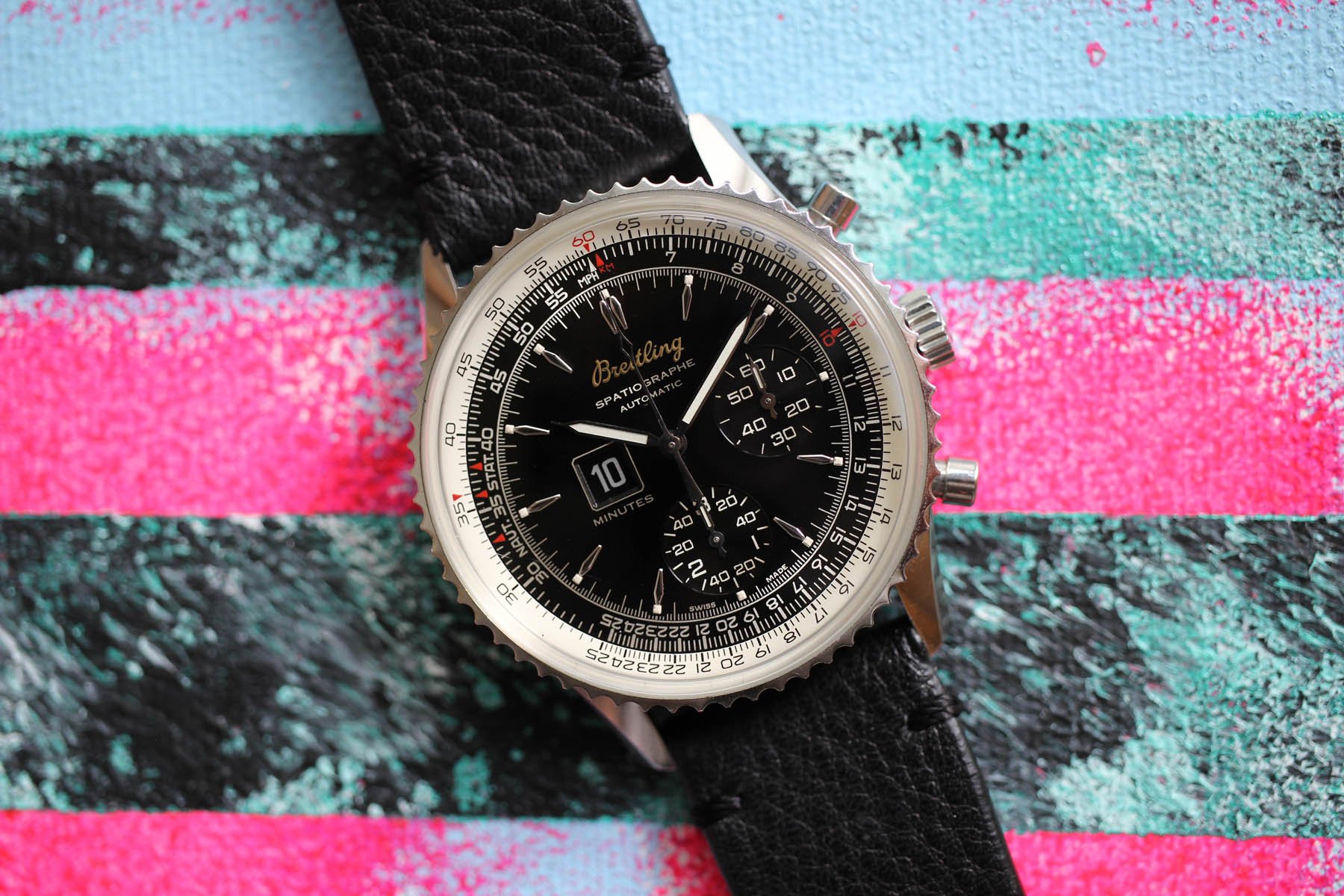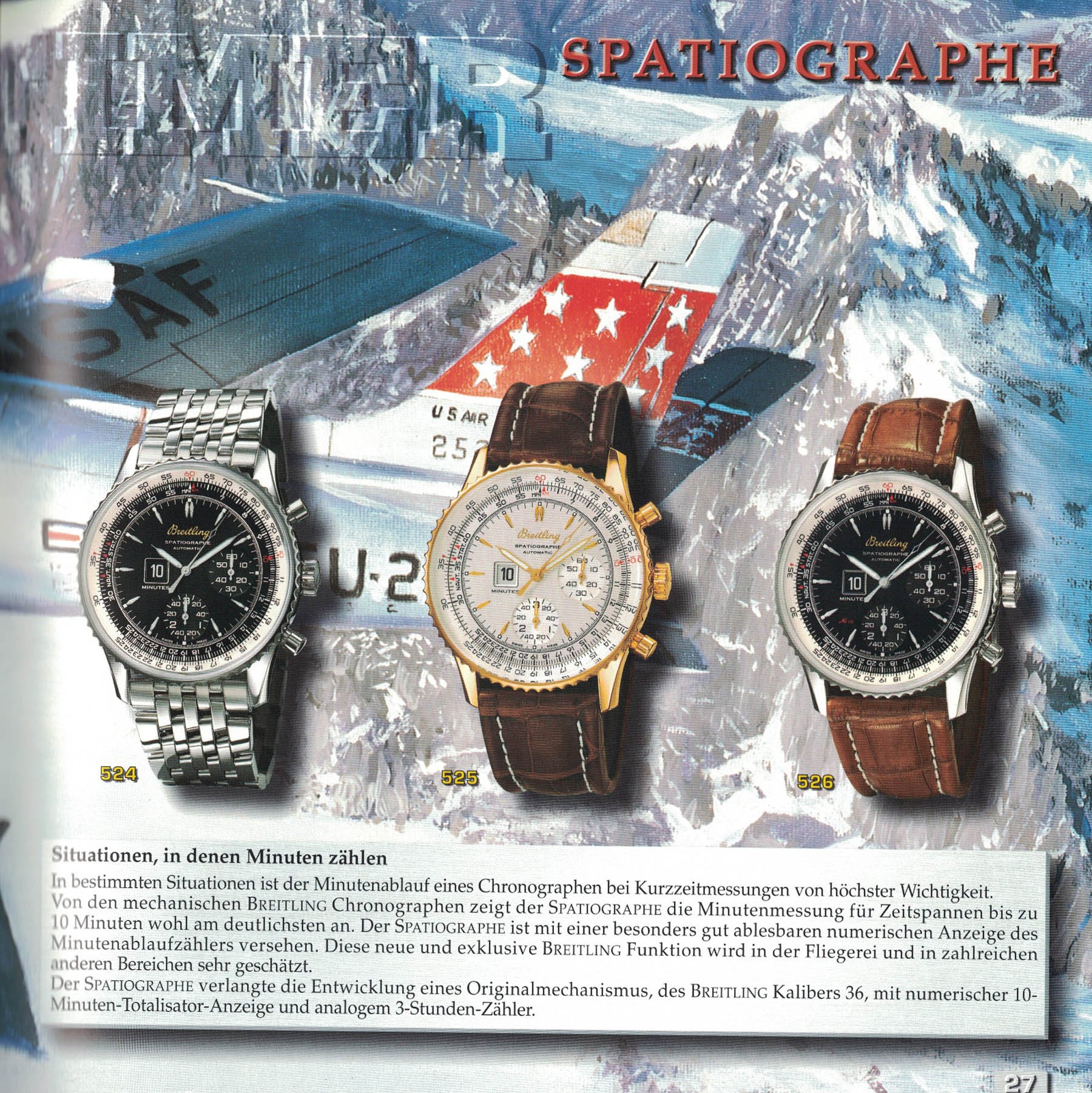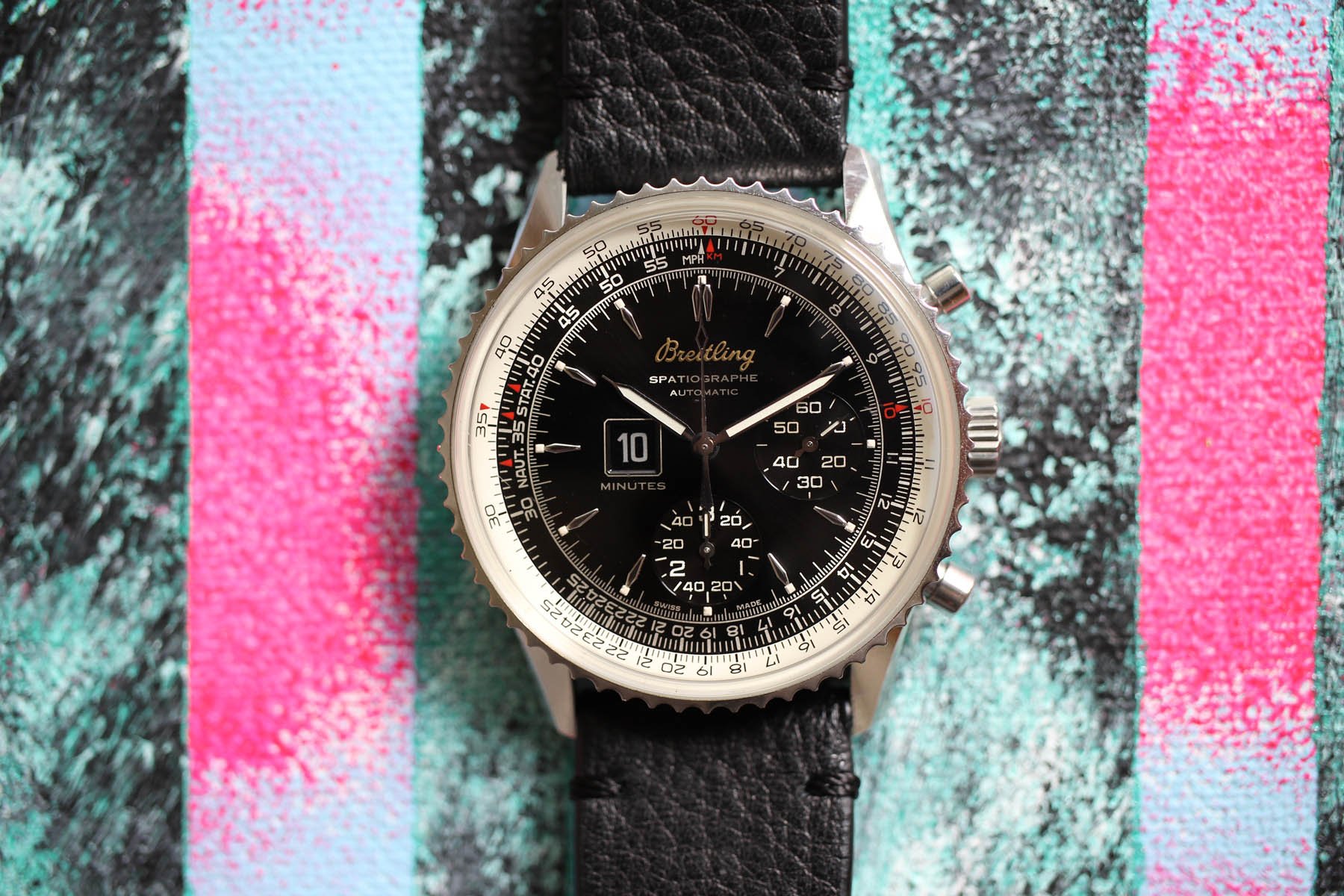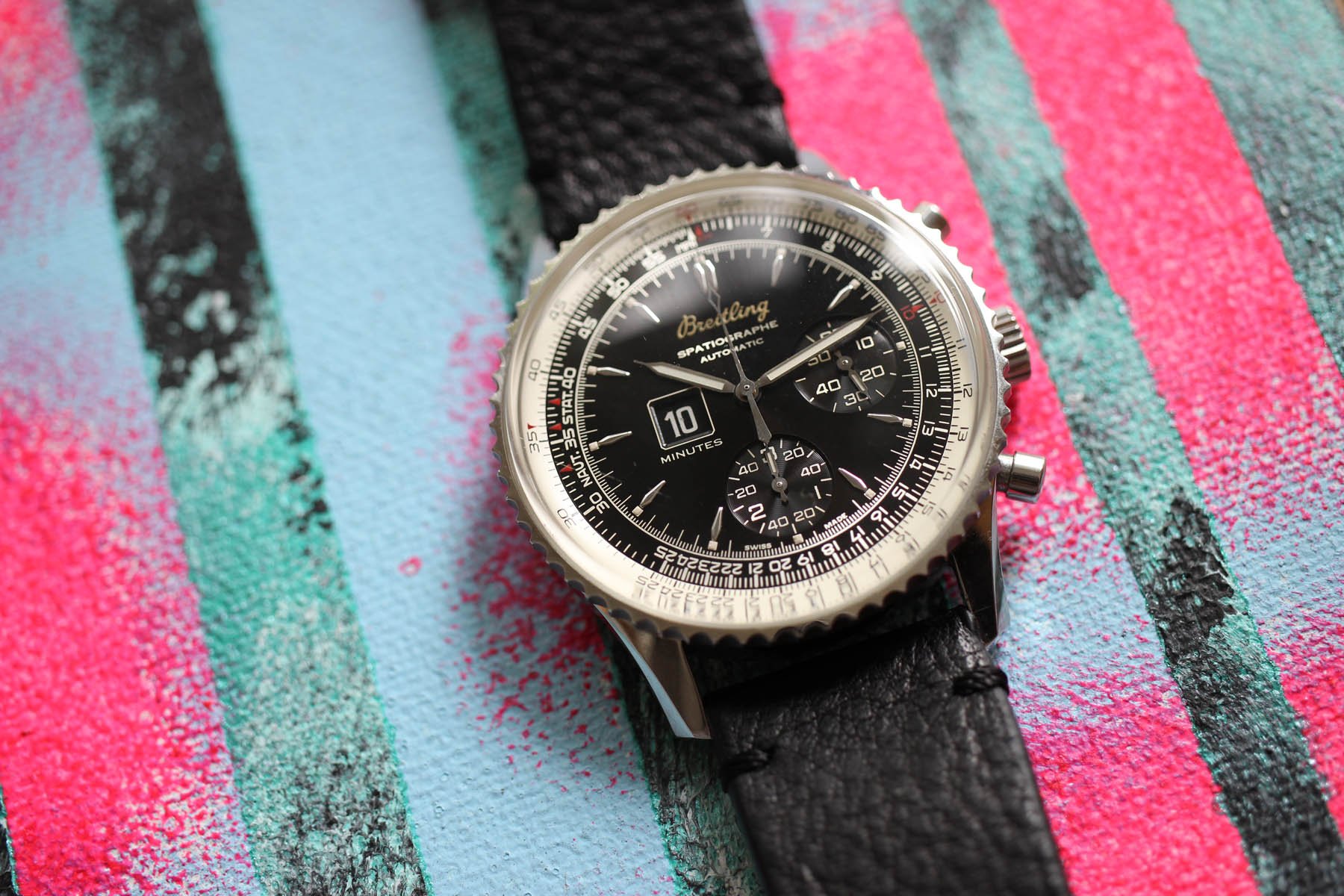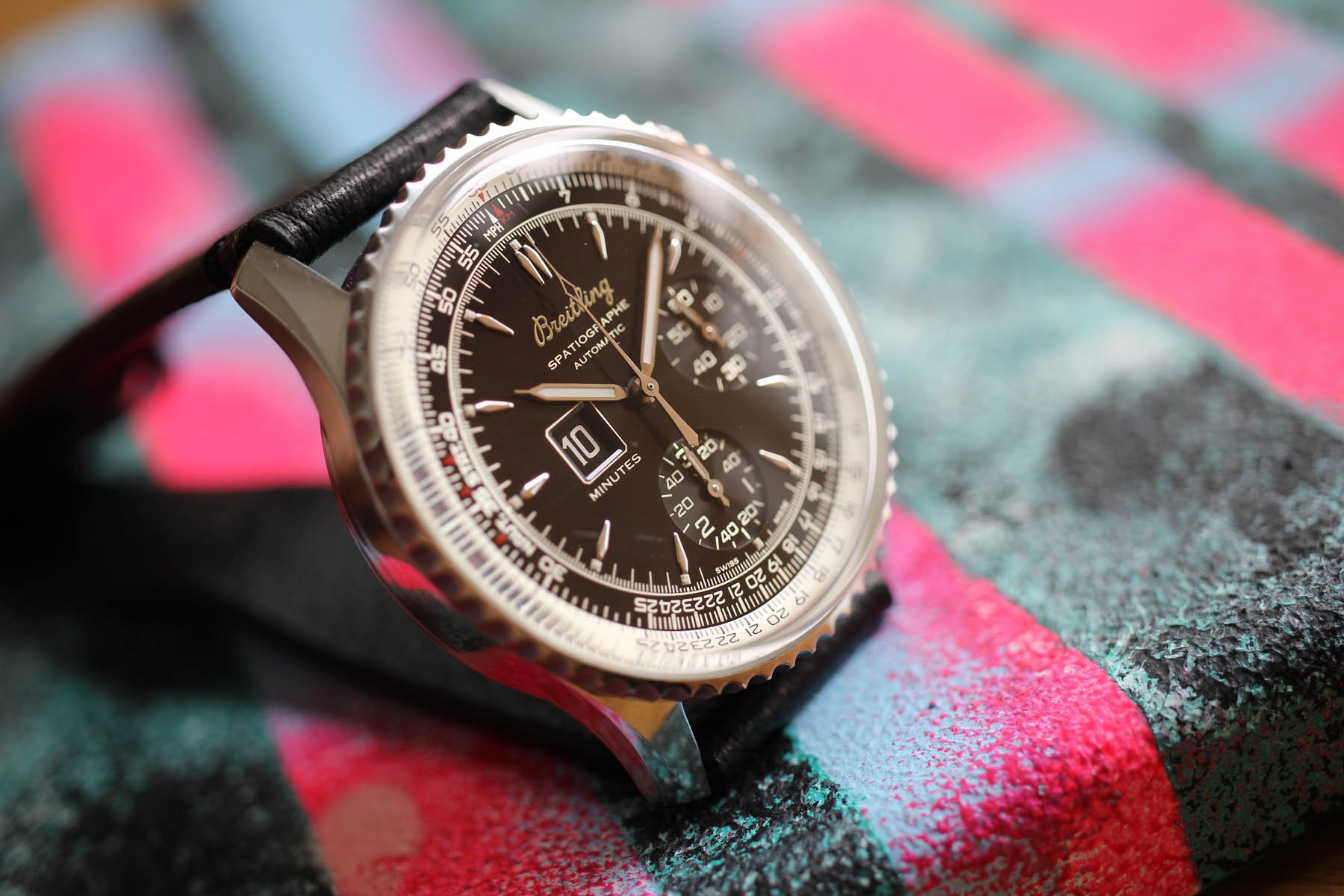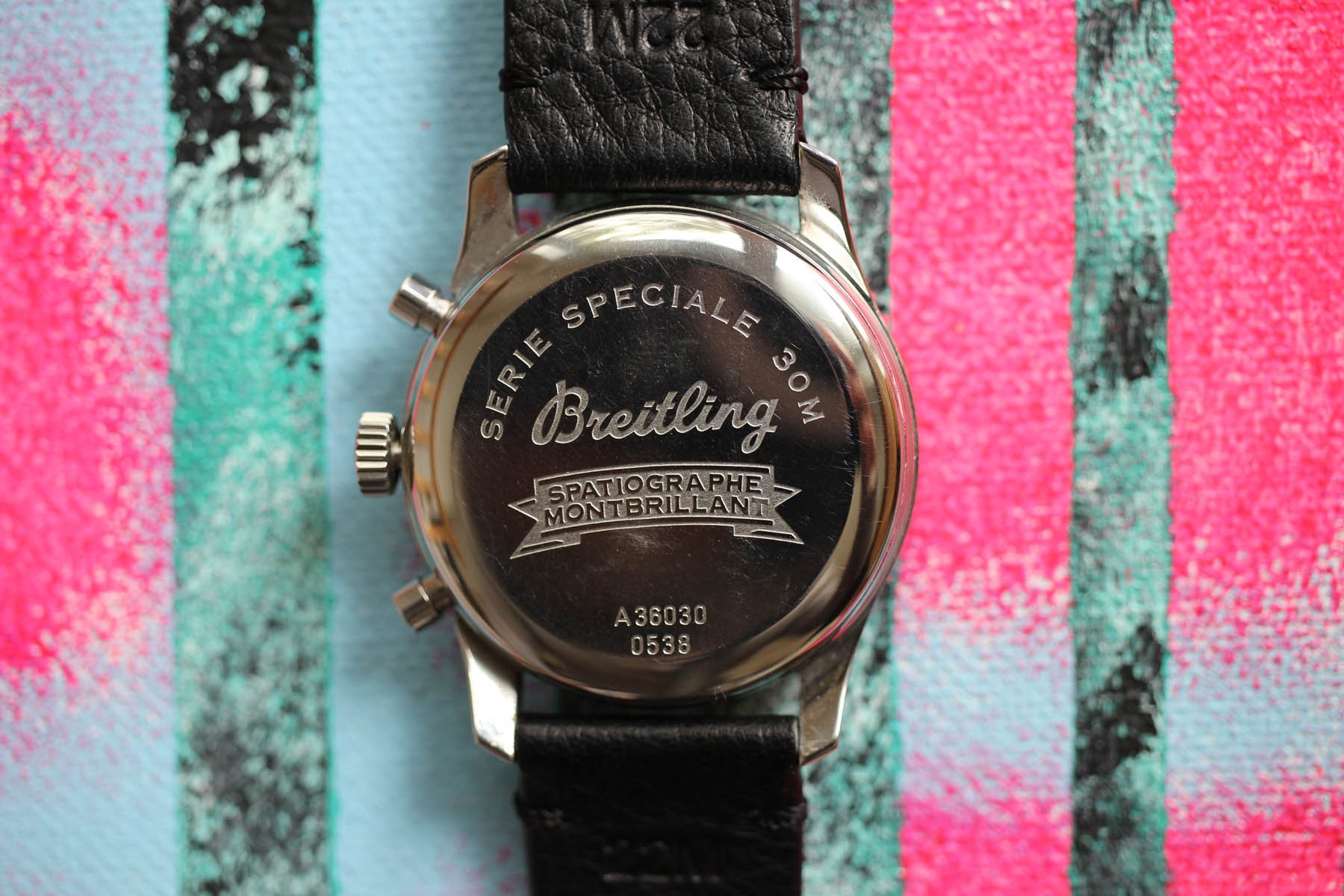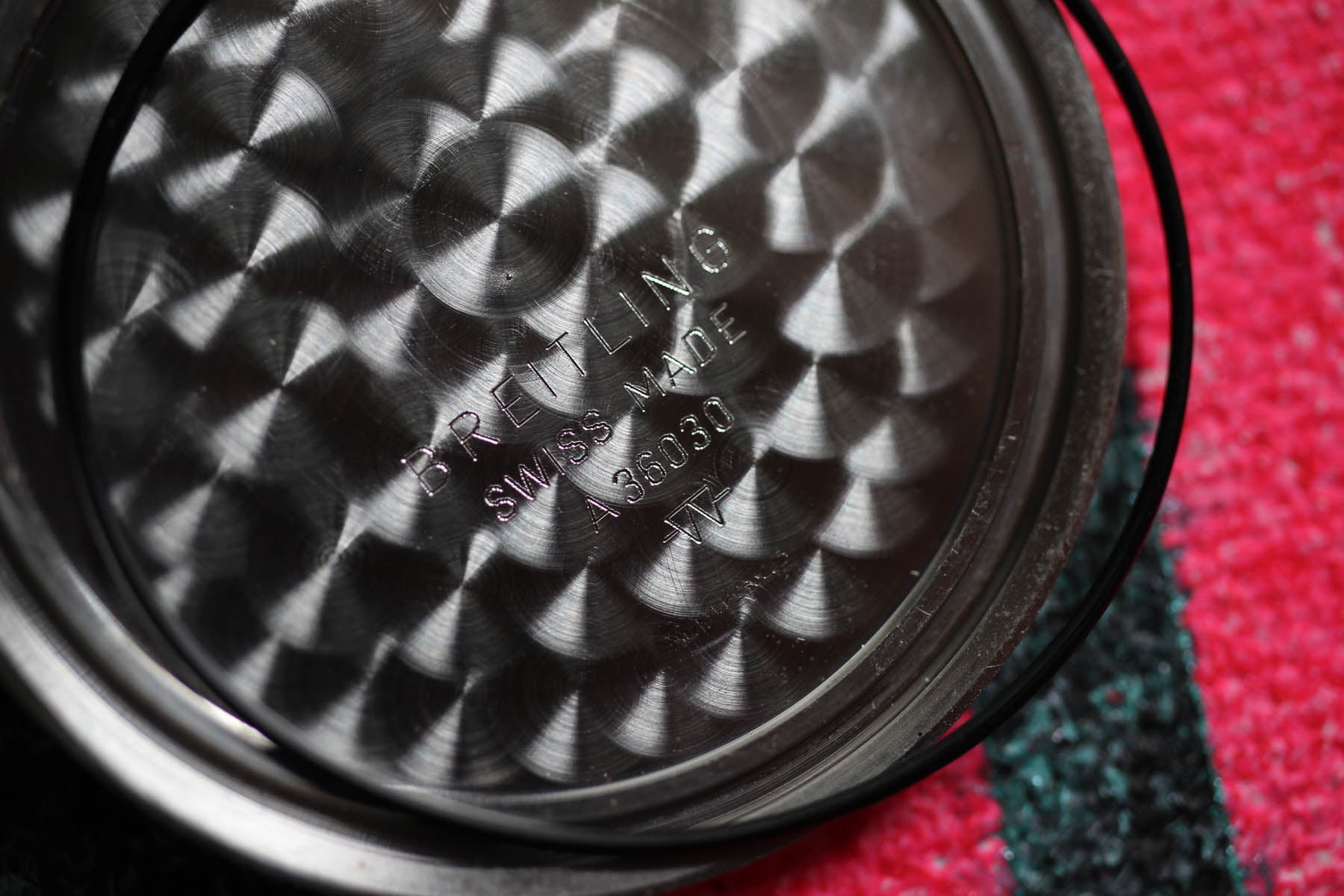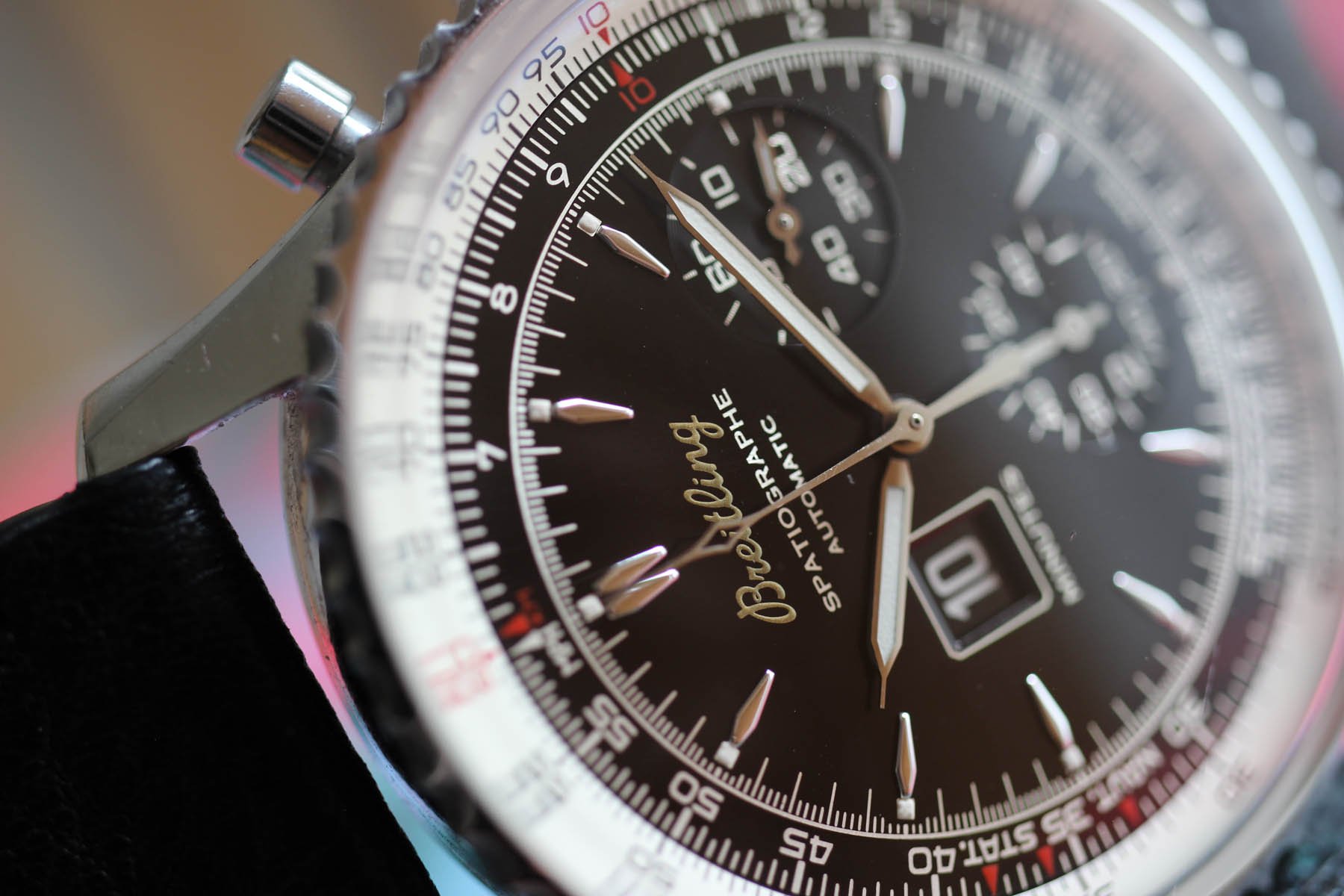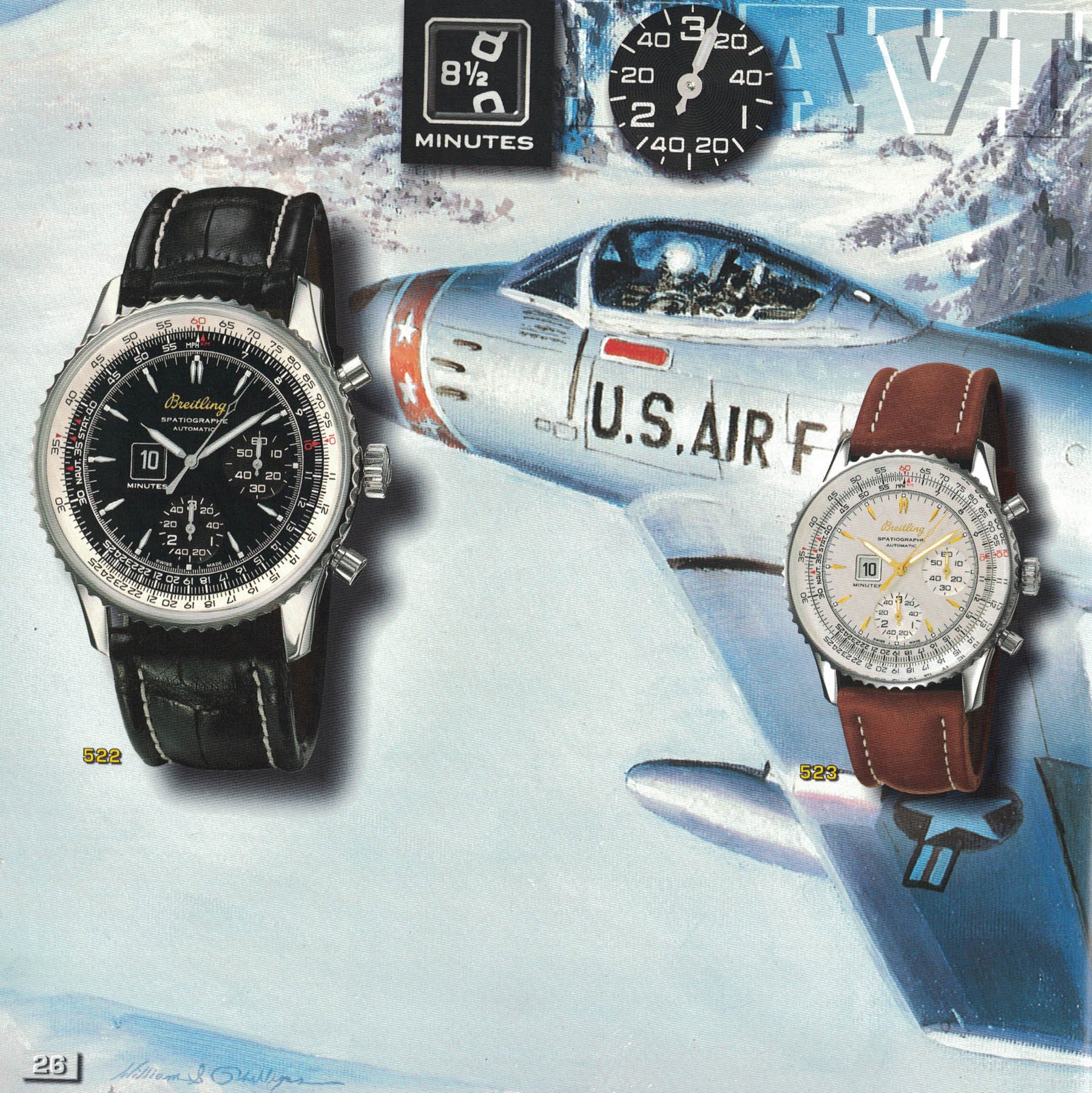#TBT Abandoned Breitling Spatiographe Montbrillant Watch
We won’t travel far into the past for today’s #TBT. The Breitling Spatiographe lived quite a short life between 1997-2002 and it holds a very special place in my collection. It sits as the lonely wolf among numerous pre-1980s watches and a decent bunch of modern timepieces. What an undervalued watch!
Looking back, it does not necessarily mean we have to jump seven decades in the past to show you something spectacular. We haven’t featured many “young-timers“ born around the 1990s on #TBT, but today we are about to change that. The Breitling Spatiographe is a pretty unusual piece that is often easily overlooked. It has the typical strong Navitimer design DNA but comes with a bit of a twist.
Witty Breitling Spatiographe
Instead of a standard minute sub-dial, the Breitling Spatiographe features a window under which you can see a slowly rotating minute disc. With only 10 minutes to show, it disrupts chronograph stereotypes. If you lower your sight slightly to the right, there is another surprise waiting. While a standard chronograph with 3 sub-dials holds this place for a 12 hours counter, look what’s there on the Spatiographe. A three hour counter that’s not divided into typical 30 minutes slots, but into 10-minute intervals. Brilliant.
Sad news
Writing a hands-on review on the early 2000s watch gave rise to an exciting idea. One that seems lunatic to go through with when it comes to 50 or 80-year-old watches. I thought about how amazing it would be to connect with the real product designers and watchmakers that were involved or better yet were the brains of the watch development. But it seems it’s just as impossible a quest as it is with pre-quartz crisis Breitling watches…
I’ve been on it since February, but I’m still fumbling in the dark. Even one of the most active Breitling community advisors and vintage aficionado @watchfred has very little information about it. I got in touch with Sylvain Bergeron, Breitling head of product design. Through a few other contacts, I reached Nicolas Chambron, Digital Project Manager & Heritage, who, like many of us, shares in the passion for vintage Breitling watches. So far it seems all people involved in the project left and we have no names so far.
What we know about the Spatiographe
Despite limited knowledge, I decided to go public with what we know and what we collected from accessible sources. It reminds me of an exciting time years ago when RJ was exploring stories behind the Omega Speedmaster. If you have any other and deeper information or you know (or you are) people involved in the project, I would be delighted to find out more. We still don’t know the real motivation, inspiration, or reasoning behind the Spatiographe idea and its release. For the time being, you have to stay with our honest assumptions.
765 Co-Pilot reference
The first and most probable link is the early 1950s digital 765 Co-Pilot, also known as the “Lucy Digital“. In the place where you would usually see a date window, “Lucy” had a 15-minutes digital counter display for the pilot’s instrument approaches. The Breitling Spatiographe on the contrary features the digital counter on the left side. And it’s considerably bigger. There is hardly a better explanation than the one that the Spatiographe commemorates one of the most important chronographs in the history of Breitling. But why is it only 10 minutes and not 15? Why are there 3 hours only? I am afraid those are questions we won’t find answers to today.
Movement
Breitling Spatiographe has a special Dubois-Depraz chronograph module that’s integrated with the ETA2892-A2. Simply put, that was the time when the automatic caliber 36 was the closest representation to in-house movements. With my limited knowledge, I imagine that the ETA central second was connected through a special pinion with the Depraz module sitting right under the dial. That’s why you don‘t see it at all when you open the watch. If you press the pusher, the invisible and constantly running ETA second activates the Depraz chronograph wheel train.
Unpopularity
The ETA movement base might the primary reason why the Spatiographe is so under the radar. I don’t know why it was not popular after release, but I guess a low production volume also doesn‘t help today. It’s a chicken and egg problem. Low penetration means there isn’t much awareness about this specific model resulting in low prices. Even though common sense says it should be more expensive.
Price exercise
If you see what happened to prices of vintage Breitling chronographs over the last decade, the Spatiographe prices have stayed stable. I found a few listings from around 2010 for around €2.5k. If you are lucky, you can still get it today for the same or slightly higher price. This is quite interesting to me and I really expect the prices of Breitling Spatiographe to jump in years to come. Especially once more information about it comes available.
Spatiographe makes you feel like you have the Navitimer and a completely unique watch at the same time.
It’s a perfectly sized and pretty refreshing addition to standard chronographs. It’s slightly higher but still wears quite comfortably. And if you are used to time the duration of simple activities, the digital disc counting up from 1 to 10 is a real charmer. It’s an interesting position that makes you feel like you have the Navitimer and a completely unique watch at the same time. By the way, a few collectors I really respect don’t show their Spatiographe on their Instagram accounts, but they already keep house it in their watch collection. It’s funny they don’t get much wrist time, but all of them consider it a very genuine and pleasant watch to wear.
Choose your Spatiographe design
If I showed you two watches and asked you to point your finger towards a chronograph designed in the 1970s, would you get it right? I bet you would. That era has such an identifiable flavor. Well, the early 2000s also has a similarly distinct style. There are a couple of dial variations of the “spati” available. Mine is the more reserved, with its smart and no-nonsense hour batons.
Believe it or not, there is an incredibly crass, awesomely period-appropriate version with italicised Roman numerals used to mark the hours instead. It is much more — how can I say this— full on, than my example. But, as time passes, these in-your-face pieces become charmingly collectible for their grotesqueness. Both models have their own handset, but my option is also available with a white dial in either a steel or gold case if you find yourself craving precious metals. So that means you have four watch head options to choose from (plus strap/bracelet decisions). My piece is the ref. A36030, others are A36030, A36330, and finally, the D36330.
Last thoughts
I got my piece from France and it seems it was not worn much. According to my watchmaker, it was never opened before he had a look at it. I decided to put down the nice, but quite heavy bracelet and fitted it on a soft leather strap that gives it more of a vintage flair. I think it’s more than apparent that I am a great fan of this watch and I like to rotate it with my modern timepieces. The originality and creativity make it a true black sheep in the Breitling chronograph family. But I expect that to change in the decades to come. Happy hunting.
Follow me on my Instagram.

